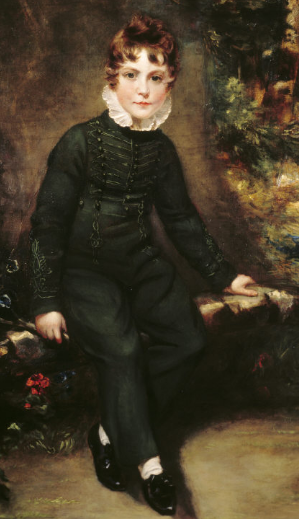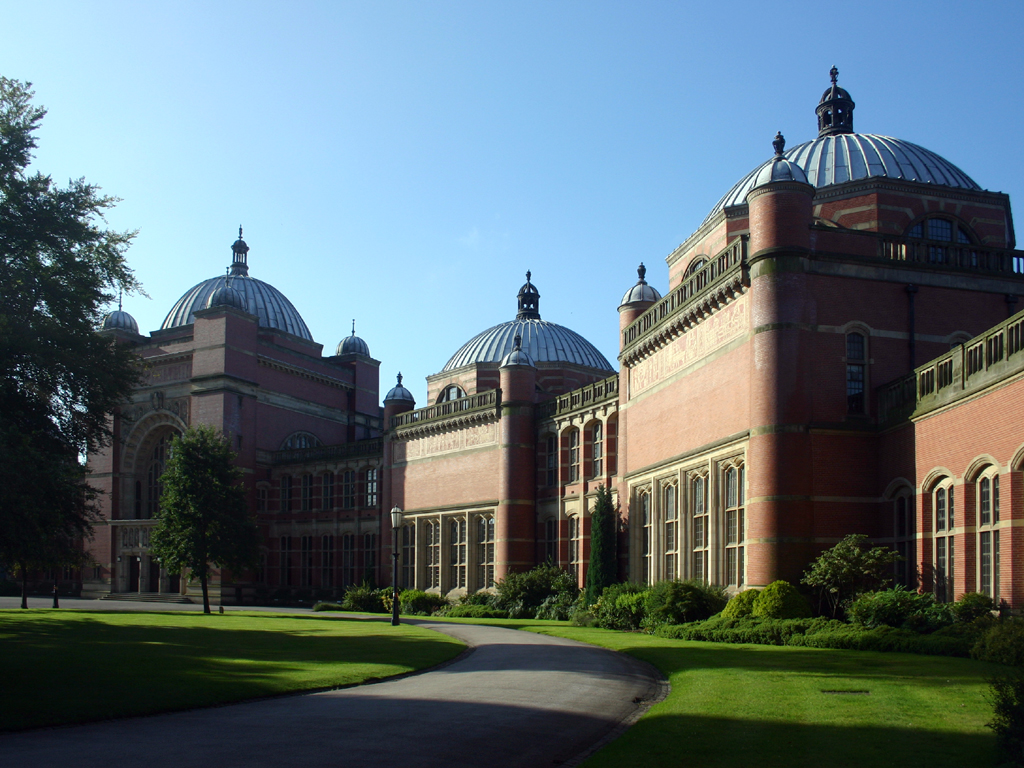|
Henry Villiers Parker, Viscount Boringdon
Henry Villiers Parker, Viscount Boringdon (28 May 1806 – 1 November 1817) was a British nobleman. Life He was the son and heir apparent of John Parker, who had him painted by Benjamin Burnell in 1813. His mother was Lady Augusta Fane, second daughter of John Fane, 10th Earl of Westmorland, whom Parker had married in 1804 but from whom he was divorced by Act of Parliament in 1809 - she re-married to Sir Arthur Paget later in 1809. In 1815, his father was created Earl of Morley and Henry assumed the courtesy title of Viscount Boringdon. However, Henry died at Saint-Mandé near Paris in 1817 aged 11, having "incautiously taken into his mouth an ear of rye" which having lodged in the "lowermost part of the lungs", caused his slow and painful death over several days, which he "supported with a firmness, cheerfulness and patience which circumstances the most trying could never disturb", as the monument by Delaistre erected to his memory by his father in 1819 in St Mary's Churc ... [...More Info...] [...Related Items...] OR: [Wikipedia] [Google] [Baidu] |
Heir Apparent
An heir apparent, often shortened to heir, is a person who is first in an order of succession and cannot be displaced from inheriting by the birth of another person; a person who is first in the order of succession but can be displaced by the birth of a more eligible heir is known as heir presumptive. Today these terms most commonly describe heirs to hereditary titles (e.g. titles of nobility) or offices, especially when only inheritable by a single person. Most monarchies refer to the heir apparent of their thrones with the descriptive term of ''crown prince'' or ''crown princess'', but they may also be accorded with a more specific substantive title: such as Prince of Orange in the Netherlands, Duke of Brabant in Belgium, Prince of Asturias in Spain (also granted to heirs presumptive), or the Prince of Wales in the United Kingdom; former titles include Dauphin in the Kingdom of France, and Tsesarevich in Imperial Russia. The term is also used metaphorically to indicat ... [...More Info...] [...Related Items...] OR: [Wikipedia] [Google] [Baidu] |
John Parker, 1st Earl Of Morley
John Parker, 1st Earl of Morley FRS (3 May 1772 – 14 March 1840), known as 2nd Baron Boringdon from 1788 to 1815, was a British peer and politician. Origins Morley was the only son of John Parker, 1st Baron Boringdon, of Boringdon Hall, Plympton, of Court House, North Molton, and of Saltram, all in Devon, and his second wife Theresa Robinson, daughter of Thomas Robinson, 1st Baron Grantham. His mother died when he was three years old and his father when he was fifteen. His parents had employed the architect Robert Adam to complete the interior of Saltram House, rebuilt by his own father John Parker as one of the grandest houses in Devon. The Parker family had risen to prominence in the mid-16th century as the bailiff of the manor of North Molton, Devon, under Baron Zouche of Haryngworth. Education He was educated locally at Plympton Grammar School (which his father's friend the painter Sir Joshua Reynolds (1723–1792) had also attended) within walking distance ... [...More Info...] [...Related Items...] OR: [Wikipedia] [Google] [Baidu] |
Benjamin Burnell
Benjamin Burnell (1769–1828) was a British portrait painter. His works include portraits of Sir Jacob Astley (sometime between 1780 and 1817), Harvey Christian Combe (1800) and Henry Villiers Parker, Viscount Boringdon (1813). The National Portrait Gallery also contains his chalk drawings of William Holwell Carr (1798) and Sir Samuel Egerton Brydges, 1st Baronet Sir Samuel Egerton Brydges, 1st Baronet (30 November 1762 – 8 September 1837) was an English bibliographer and genealogist. He was also Member of Parliament for Maidstone from 1812 to 1818. Educated at Maidstone Grammar School and The K ... (1817), whilst others are in private collections. References 1769 births 1828 deaths British portrait painters 18th-century British painters 19th-century British painters {{UK-painter-18thC-stub ... [...More Info...] [...Related Items...] OR: [Wikipedia] [Google] [Baidu] |
John Fane, 10th Earl Of Westmorland
John Fane, 10th Earl of Westmorland, (1 June 175915 December 1841), styled Lord Burghersh between 1771 and 1774, was a British Tory politician of the late 18th and early 19th centuries, who served in most of the cabinets of the period, primarily as Lord Privy Seal. Background Westmorland was the son of John Fane, 9th Earl of Westmorland, and Augusta, daughter of Lord Montague Bertie. He succeeded in the earldom on the death of his father in 1774. Political career In 1789 Westmorland was appointed Joint Postmaster General by William Pitt the Younger and sworn of the Privy Council. Already the same year he was appointed Lord Lieutenant of Ireland by Pitt, a post he held until 1794. On 18 February 1793, he was appointed a deputy lieutenant of Northamptonshire. From 1795 to 1798 he was Master of the Horse under Pitt. The latter year Pitt made him Lord Privy Seal, a position he would hold under five prime Ministers (Pitt, Addington, Pitt again, Portland, Perceval and Liverpool) ... [...More Info...] [...Related Items...] OR: [Wikipedia] [Google] [Baidu] |
Arthur Paget (diplomat)
Sir Arthur Paget GCB, PC (15 January 1771 – 26 July 1840) was a British diplomat and politician. Life Arthur Paget was the third son of Henry Paget, 1st Earl of Uxbridge and his wife Jane Champagné daughter of Arthur Champagné, Dean of Clonmacnoise in Ireland. He was a younger brother of Henry Paget, 1st Marquess of Anglesey and the older brother of Sir Edward Paget, an army officer and colonial governor.''The Paget brothers, 1790–1840'', ed. Lord Hylton . G. H. Jolliffe(1918) He was educated at Westminster School and Christ Church, Oxford, but did not take a degree.''The Paget Papers: Diplomatic and other correspondence of the Right Hon. Sir Arthur Paget, G. C. B., 1794–1807'', ed. A. B. Paget, 2 vols. (1896) At Oxford, Paget formed a close relationship with Cyril Jackson, Dean of Christ Church. Diplomatic career In 1791, he entered the British diplomatic service. J. M. Rigg described Paget as 'a man of easy charm who made his way with little difficulty up th ... [...More Info...] [...Related Items...] OR: [Wikipedia] [Google] [Baidu] |
Earl Of Morley
Earl of Morley, of Morley in the County of Devon, is a title in the Peerage of the United Kingdom. It was created in 1815 for John Parker, 1st Earl of Morley, John Parker, 2nd Baron Boringdon. At the same time he was created Viscount Boringdon, of North Molton in the Devonshire (country), County of Devon, which is used as a courtesy title by the heir apparent to the earldom. It does not seem to have any connection with Baron Morley of Morley in Norfolk, held by another Parker family in the 16th century. Appellation of Morley There existed between 1299 and 1697 an ancient Baron Morley, Barony of Morley first held by the de Morley family, lord of the manor, lords of the manor of Morley Saint Botolph in Norfolk, which passed in 1489 by marriage to the Parker family, apparently unrelated to the Parker family of Saltram, Devon which latter had emerged in the 16th century from seemingly humble origins in North Molton in Devon. It can thus be no co-incidence that in 1815 John Parker, 1s ... [...More Info...] [...Related Items...] OR: [Wikipedia] [Google] [Baidu] |
Saint-Mandé
Saint-Mandé () is a high-end commune of the Val-de-Marne department in Île-de-France in the eastern suburbs of Paris, France. It is located from the center of Paris. It is one of the smallest communes of the Île-de-France by land area, but is one of the most densely populated municipalities in Europe. It is located on the edge of the 12th arrondissement of Paris, near the Porte de Vincennes and the Porte de Saint-Mandé. The motto of the city is ''Cresco et Floresco'', which means "I grow and I flourish". History On 1 January 1860, the city of Paris was enlarged by annexing neighboring communes. On that occasion, about two-thirds of the commune of Saint-Mandé was annexed to Paris, and now forms the neighborhoods of Bel-Air and Picpus, in the 12th arrondissement of Paris. In 1929, the commune of Saint-Mandé lost one-quarter of its territory when the city of Paris annexed the Bois de Vincennes, a small part of which belonged to Saint-Mandé, leaving Saint-Mandé as a small ... [...More Info...] [...Related Items...] OR: [Wikipedia] [Google] [Baidu] |
François-Nicolas Delaistre
François-Nicolas Delaistre (Paris 9 March 1746 – 23 April 1832 Paris) was a French sculptor. Delaistre was educated by Félix Lecomte and Louis-Claude Vassé. Delaistre won the Prix de Rome in 1772; he studied a year at the École royale des élèves protégés at the French Academy and later at the Académie de France in Rome between 1773 and 1777. It was there that he probably first met the architect Pierre-Adrien Pâris, with whom he later collaborated. His best-known work, the group ''Cupid and Psyche'', was originally executed in Rome (the later marble version is in the Louvre The Louvre ( ), or the Louvre Museum ( ), is the world's most-visited museum, and an historic landmark in Paris, France. It is the home of some of the best-known works of art, including the ''Mona Lisa'' and the ''Venus de Milo''. A central l ... at Paris). The ''Nuttall Encyclopedia'' mentions ''"Delaistre, a French statuary, born in Paris (1836-1891)"'': this may be a relative of Fran� ... [...More Info...] [...Related Items...] OR: [Wikipedia] [Google] [Baidu] |
Nikolaus Pevsner
Sir Nikolaus Bernhard Leon Pevsner (30 January 1902 – 18 August 1983) was a German-British art historian and architectural historian best known for his monumental 46-volume series of county-by-county guides, '' The Buildings of England'' (1951–74). Life Nikolaus Pevsner was born in Leipzig, Saxony, the son of Anna and her husband Hugo Pevsner, a Russian-Jewish fur merchant. He attended St. Thomas School, Leipzig, and went on to study at several universities, Munich, Berlin, and Frankfurt am Main, before being awarded a doctorate by Leipzig in 1924 for a thesis on the Baroque architecture of Leipzig. In 1923, he married Carola ("Lola") Kurlbaum, the daughter of distinguished Leipzig lawyer Alfred Kurlbaum. He worked as an assistant keeper at the Dresden Gallery between 1924 and 1928. He converted from Judaism to Lutheranism early in his life. During this period he became interested in establishing the supremacy of German modernist architecture after becoming aware of ... [...More Info...] [...Related Items...] OR: [Wikipedia] [Google] [Baidu] |
Edmund Parker, 2nd Earl Of Morley
Edmund Henry Parker, 2nd Earl of Morley (10 June 181028 August 1864), styled Viscount Boringdon from 1817 to 1840, was a British peer and Whig politician. Early life Morley was the son of John Parker, 1st Earl of Morley and his second wife Frances Talbot, and was educated at Christ Church, Oxford. Career In 1840 Morley succeeded his father as second Earl of Morley and took his seat on the Whig benches in the House of Lords. He was appointed Colonel of the South Devon Militia on 8 January 1845 and held the post until it was abolished in 1852. H.G. Hart, ''The New Annual Army List'' (various dates from 1840). From 1846 to 1852 he served as a Lord-in-waiting (government whip in the House of Lords) in the Whig administration of Lord John Russell. Morley was also a Deputy Lieutenant of Devon and a Lord of the Bedchamber to Prince Albert. Personal life Lord Morley married his second cousin Harriet Sophia, daughter of Montagu Edmund Parker, in 1842 and widow of William Coryto ... [...More Info...] [...Related Items...] OR: [Wikipedia] [Google] [Baidu] |


_-_John_Parker_II_(1772–1840)%2C_1st_Earl_of_Morley_-_872550_-_National_Trust.jpg)
_-_The_Honourable_Sir_Arthur_Paget_(1771–1840)%2C_GCB%2C_PC_-_1175940_-_National_Trust.jpg)

